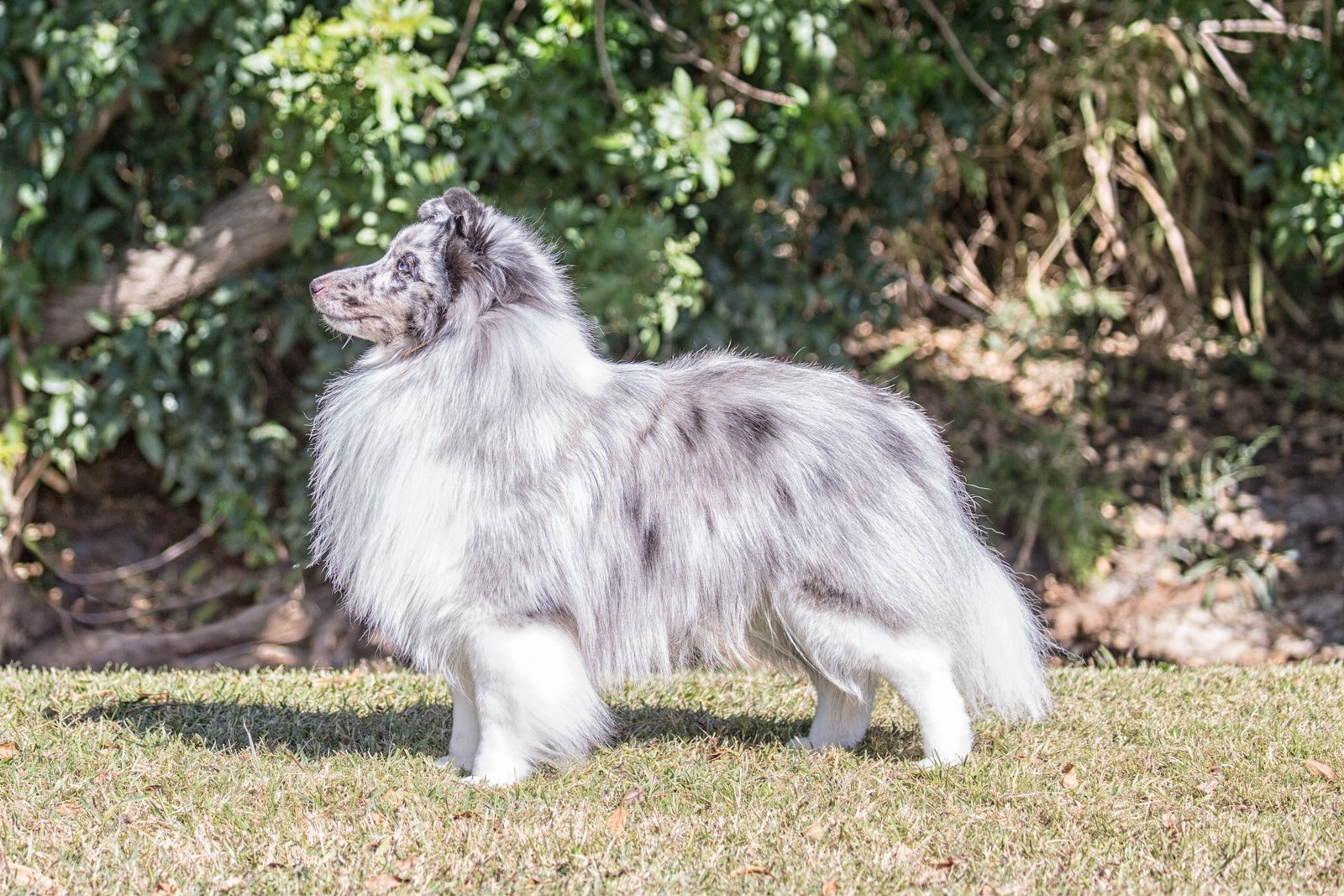Pug vs Shetland Sheepdog: A Comprehensive Guide
Pug vs Shetland Sheepdog: A Comprehensive Guide to Choosing Your Perfect Pet
When deciding between a Pug and a Shetland Sheepdog, it's like choosing between your favorite comfort food and a thrilling, exotic dish. Each breed brings a unique flavor to your life, catering to different tastes and personalities.
Pugs are the mac and cheese of the dog world: comforting, irresistible, and always ready to put a smile on your face. These charming little comedians thrive on human interaction, much like a warm, gooey bowl of cheesy goodness that wraps you in a hug. With their playful antics and affectionate nature, Pugs are perfect for those seeking a constant, cheerful companion to brighten up their days.
Shetland Sheepdogs are like a zesty, vibrant curry: complex, energetic, and full of excitement. These intelligent, loyal dogs are the ultimate multi-purpose partners, ready to take on any adventure life throws their way. Just as a flavorful curry awakens your senses, Shelties stimulate your mind and body with their active, engaging presence. They're ideal for those who crave a dog that's always up for a challenge, whether it's learning new tricks or embarking on a hiking expedition.
Choosing between these two breeds is like deciding between comfort food and an exotic delicacy. It's about understanding your tastes, lifestyle, and the kind of culinary experience you're craving in a furry friend. Whether you prefer the cozy, heartwarming embrace of a Pug or the zesty, invigorating energy of a Sheltie, the key is to find a match that satisfies your soul and leaves you wanting more.
So, take a moment to reflect on your personal preferences and lifestyle, just as you would when perusing a menu. Are you in the mood for the familiar, comforting charm of a Pug, or are you ready to embark on a thrilling, flavorful journey with a Shetland Sheepdog? Whichever breed you choose, you're sure to have a delightful, fulfilling experience that will leave you craving more of their unique, irresistible charm.
Understanding the Pug

History and Origin
Pugs are one of the oldest dog breeds, with their origins dating back to 400 B.C. in China. They were bred as companion animals for the wealthy, and their role has remained largely unchanged throughout history as cherished companions. The breed's name is thought to have come from the marmoset monkeys, which were also called "Pug monkeys" due to their similar facial features. Pugs were later brought to Europe through Dutch traders and became popular among royal circles.
Physical Characteristics
Pugs are known for their distinctive physical characteristics: a large round head, big sparkling eyes, and a wrinkled brow that gives them a range of human-like expressions. They have a fine, glossy coat that comes in colors like fawn or black and a compact, square body with well-developed muscles. Their facial wrinkles were selectively bred to resemble the Chinese character for "prince." Pugs are also recognized for their curled tails and straight legs.
Personality and Temperament
Pugs are intelligent, playful, and extremely affectionate dogs. They are known for their sociable nature and thrive on human companionship, often following their owners around. Despite their occasional stubborn streak, Pugs are not aggressive and are eager to please, making them suitable for families with children. They are also known to be good-natured sleep lovers and can be mischievous when left alone for too long.
Health Considerations
Pugs are prone to several health issues, largely due to their brachycephalic (flat-faced) nature. Common problems include breathing difficulties, eye ulcers, skin infections, and hip dysplasia. They are also susceptible to obesity, which can exacerbate other health problems. Regular veterinary check-ups are significant for maintaining a Pug's health.
Grooming Needs
Pugs require regular grooming due to their shedding coats and skin folds. They need frequent bathing and ear cleaning to prevent infections. Daily cleansing of their face and wrinkles is important to avoid irritation and infection. Pugs also require daily teeth brushing to prevent periodontal disease. Due to their heavy shedding, especially in summer, grooming is essential to manage their fur.
Understanding the Shetland Sheepdog

History and Origin
Shetland Sheepdogs, affectionately known as the Sheltie, boast a rich history originating from the Shetland Islands off Scotland's northern coast. A blend of various breeds, including Greenland’s Yakki Dog, Pomeranians, and small spaniels, this hardy breed was initially employed by Shetland islanders for a multitude of farm tasks. From keeping birds and sheep away from crops to alerting owners of approaching strangers, Shelties were not only diligent workers but also cherished family companions.
Physical Characteristics
Physically, Shetland Sheepdogs are recognized for their athletic build, standing between 13 and 16 inches tall at the shoulder and weighing approximately 22 pounds. Their double coat, while luxurious, demands regular grooming to prevent matting and manage shedding.
Personality and Temperament
Shetland Sheepdogs are intelligent, affectionate, and loyal. With inherent herding instincts, they may be cautious around strangers but are highly trainable and eager to please. Excelling in obedience and agility, Shelties are well-suited for families and are generally good with children. Their adaptability allows them to thrive in various living environments, be it urban or rural, as long as they receive sufficient mental and physical stimulation.
Health Considerations
While generally healthy with an average lifespan of 12-15 years, Shetland Sheepdogs may be susceptible to health issues such as hip dysplasia, thyroid disease, eye diseases, dermatomyositis, von Willebrand's disease, gallbladder mucoceles, and epilepsy.
Grooming Needs
Grooming a Shetland Sheepdog requires regular attention, involving the removal of loose undercoat, precise combing of wispy fur, mat trimming, and brushing the rough outer coat. Periodic bathing, recommended every one or two months, helps maintain skin and fur cleanliness. The grooming process is essential to ensure the well-being and beauty of these beloved and versatile companions.
Pug vs Shetland Sheepdog: A Side-by-Side Comparison

|
Pug |
Shetland Sheepdog |
|
|
Size |
Height: 10-14 inches, Weight: 13-20 lbs |
Height: 13-16 inches, Weight: 11-24 lbs |
|
Temperament |
Friendly, playful, and good with children and other pets. They are not typically aggressive and enjoy being part of family activities. |
Very friendly, intelligent, and good with children and other pets. They are known for their loyalty and affection towards their families. |
|
Grooming Needs |
High. Pugs require regular grooming due to their dense coat |
High. Shelties have a double coat that requires regular grooming to prevent matting and manage shedding |
|
Health Issues |
Pugs are prone to allergies and eye problems due to their characteristic bulgy eyes and squashed faces. They are also at risk for breathing problems. |
Shetland Sheepdogs are generally healthy but can be affected by a group of eye problems called collie eye anomaly. |
|
Suitability for Different Households |
Pugs are adaptable and can thrive in various environments, including apartments. They are good for new owners and families with children. |
Shelties are adaptable and can thrive in various environments, including apartments, provided they receive enough mental and physical stimulation. They are slightly better for new owners compared to Pugs. |
Choosing the Right Breed for You
Pug
Pugs are small, sturdy dogs known for their distinctive wrinkled face and short, glossy coat. They are part of the Companion Group, indicating their primary role as a companion.
Pugs are generally quiet, making them suitable for apartment living. They are also known for their laid-back, affectionate nature, and they are playful with children and other animals. However, Pugs may not tolerate hot weather or intense exercise as well as some other breeds.
Shetland Sheepdog

Shetland Sheepdogs are part of the Herding Dogs group, reflecting their historical role in herding livestock.
Shelties are larger than Pugs, with a height of 11-16 inches and a weight starting at 20 pounds. They are known for their intelligence, loyalty, and affection toward their families. They are highly trainable and excel in obedience and agility. Shelties have double fur that requires regular grooming to avoid matting and manage shedding.
They are generally good with children and can adapt well to various living situations, provided they receive enough mental and physical stimulation. Shelties have moderate exercise requirements, and regular walks, playtime, and mental stimulation are essential to keep them happy and prevent boredom.
Factors to Consider
Lifestyle
Consider your daily routine and activity level. If you lead an active lifestyle, a Sheltie might be a better fit as it requires regular exercise and mental stimulation. On the other hand, if you prefer a more laid-back lifestyle, a Pug might be more suitable due to their calm and affectionate nature.
Living Situation
Your living space is a crucial factor. Pugs are known to adapt well to apartment living due to their size and quiet nature. Shelties, while adaptable to various living situations, require enough space for exercise and mental stimulation.
Personal Preferences
Consider your preferences for a dog's physical characteristics and temperament. If you prefer a smaller, quieter dog with a distinctive appearance, a Pug might be the right choice. If you prefer a larger, more active dog that is highly trainable and intelligent, a Sheltie might be a better fit.
Time and Commitment
Both breeds require time and commitment but in different ways. Pugs require less exercise but need attention and companionship. Shelties, on the other hand, require regular exercise, mental stimulation, and grooming due to their double coat.
FAQs
What is the personality of a Pug like?
Pugs are known for their endearing personality and high levels of commitment, making them excellent companion dogs. They crave human attention and are known to work to earn it. They are also known for their distinctive expressions and mannerisms, and they have a high tolerance for inquisitive young children.
Do Pugs shed a lot?
Despite their short coat, Pugs are serious shedders. Their fur is tenacious and sticks to everything. Therefore, when adopting a Pug, be prepared to earmark plenty of time for regular grooming.
What is the average lifespan of a Pug?
Pugs live 12-15 years on average, though some have been known to live up to 20 years.
Conclusion
Pugs, with their charming personalities and compact size, are excellent for those seeking a less active canine who is content with snuggles and short walks. Their adaptability to various living situations, including apartments, makes them a versatile choice for city dwellers. However, potential owners should be prepared for their specific health needs and grooming requirements due to their brachycephalic features.
Shetland Sheepdogs are a delight for individuals or families looking for an intelligent, energetic companion. Their herding heritage means they live on mental and physical stimulation, making them ideal for active households or those with a yard. Their loyalty and trainability are unmatched, but they do come with a need for regular grooming and exercise to keep their minds and bodies healthy.
Before making your decision, consider the long-term commitment of dog ownership. Think about the time, financial responsibility, and lifestyle changes that come with adding a furry member to your family. Research thoroughly, meet with breeders or rescue organizations, and spend time with the breeds if possible.
Whether you choose the affectionate Pug or the spirited Shetland Sheepdog, you are embarking on a rewarding journey. With love, care, and responsible ownership, your new companion will be a source of joy and cherished memories for years to come.







